Mastering Screen Recording on Mac with Audio
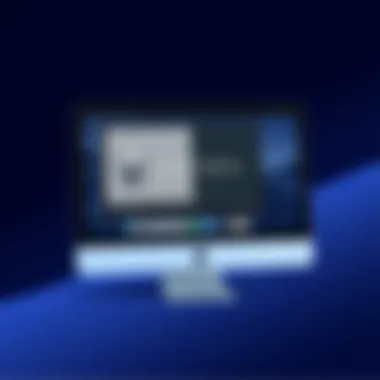
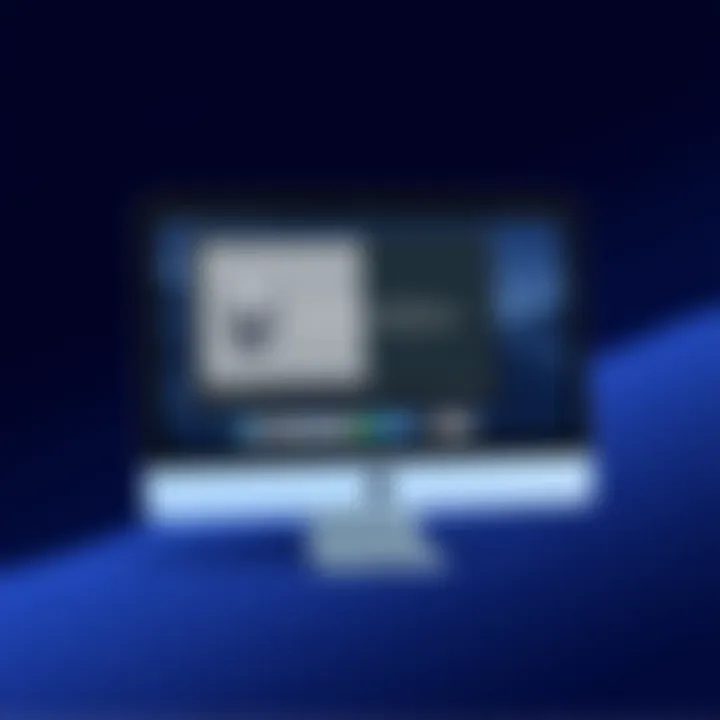
Intro
In today's digital age, the ability to record your screen is essential for a variety of reasons. Whether you’re creating tutorials, demonstrating software, or capturing gameplay, screen recording on a Mac can be a straightforward task, especially with the right tools. This guide breaks down the various methods available to record your Mac screen with sound, ensuring you have the options you need for a seamless experience.
Screen recording isn't just a technical necessity; it’s an art form that allows you to communicate ideas effectively. In the following sections, we'll look at built-in tools like macOS's QuickTime, popular third-party applications such as ScreenFlow, and best practices that can elevate your recordings from ordinary to extraordinary.
By the end of this journey, you’ll not only know how to record your screen but also how to do it in a way that makes your videos compelling and professional. Let’s dive into the tools and techniques that will help you capture your screen like a pro.
Prolusion to Screen Recording on Mac
In today’s digital age, the ability to capture what’s on your screen, especially for Mac users, has become increasingly essential. Whether you’re a content creator, an educator, or simply someone who wants to share insights from your screen, recording has solidified its place as a vital tool.
Understanding why you might want to record your Mac screen involves considering various scenarios. For instance, teachers may want to create tutorials for their students, while gamers often record their gameplay to share strategies and highlights. Businesses use screen recordings for presentations or training purposes, while software developers might document their projects to showcase features or functionality. The motivations are as diverse as the users themselves.
When diving into screen recording on Mac, one can easily become overwhelmed by the numerous built-in options and third-party applications available. What makes this process particularly noteworthy isn’t just the act of recording itself but the quality of the screen capture, which can significantly impact how information is conveyed.
Capturing your screen not only saves time but also enhances communication. Being able to visually demonstrate concepts or steps allows for clearer understanding compared to just written instructions. It bridges the gap for remote learning or collaboration where face-to-face interaction isn’t possible.
However, some considerations must be made before hitting that record button. Firstly, there’s the need for appropriate settings: proper audio capture, video quality, and the selection of what part of the screen to record, whether it’s the entire screen or just a specific application.
Beyond the technical aspects are also the ethical ones; understanding privacy issues and ensuring that content shared does not infringe on anyone else's rights is crucial. Furthermore, ensuring your workspace is tidy and your message is coherent is vital to produce quality recordings.
"A good practical demonstration often replaces pages of written instructions, thus saving time and enhancing learning efficiency."
This guide aims to illuminate the multifaceted world of screen recording on Mac, covering all the bases—from the simplest approaches using built-in tools to advanced third-party applications that offer extensive features. By gaining a holistic understanding, readers will be better positioned to navigate their screen-recording journey, ensuring they choose the best methods and tools suited for their unique needs.
Understanding the Basics of Screen Recording
Screen recording has become an essential tool for many professionals and hobbyists, especially in the age of remote work and digital communication. It enables users to capture their screen activity and convey information visually, making learning and sharing knowledge more effective. Understanding the basics of screen recording on a Mac can be the linchpin for creating high-quality content, whether you’re crafting tutorial videos, recording gaming sessions, or preparing presentations.
Learning how to effectively operate screen recording tools empowers users not just to share information, but to present it in a more engaging manner. It’s not enough to simply record; one must grasp the nuances of sound configuration, video quality, and how to tailor the content to the audience. By mastering these fundamentals, you can avoid common pitfalls and enhance the overall quality of your recordings.
What is Screen Recording?
Screen recording is the process of capturing the visual output of a computer screen, often accompanied by audio. This can range from a simple recording of desktop activities to complex video presentations that incorporate various multimedia elements.
It typically includes function like:
- Desktop capture: Everything visible on the screen can be captured, whether it's application windows, web browsers, or even error messages.
- Audio output: Whether you want to record the system sounds, microphone input, or both, adjusting these settings is crucial for a successful recording.
- Visual effects: Depending on the software used, add effects like highlights or cursor tracking, making it easier for viewers to follow your instructions.
Screen recording can be accomplished using built-in options on your Mac or through various third-party applications, but understanding the core principles behind the process is paramount.
Applications of Screen Recording
The applications for screen recording are diverse and continually expanding, making it a valuable skill for many professionals across different fields. Here are a few areas where screen recording shines:
- Education: Instructors can record lectures and tutorials to assist students, allowing for more adaptive learning environments.
- Technical Support: Tech support teams can create instructional videos to guide users through troubleshooting processes, minimizing confusion and enhancing documentation.
- Software Demonstrations: Marketers and developers can use screen recordings to showcase product features, providing a snapshot of functionality that still images cannot capture effectively.
- Gaming: Gamers often record their sessions to share highlights with friends or on platforms like YouTube and Twitch. It allows personalities to thrive as they document and comment on their gameplay.
Every application serves a unique purpose, and understanding what screen recording can do for you is the first step toward making use of it. With the right techniques and tools, anyone can transform their screen into an engaging and informative medium, tailored to whatever need arises.
Built-in Options for Screen Recording on Mac
The built-in options for screen recording on Mac provide an accessible starting point for users who want to capture their screens without needing to rely on third-party applications. These options are integrated into the macOS operating system, making them easy to access and utilize. With a focus on efficiency and usability, built-in tools help users create recordings quickly and seamlessly, which is essential for tutorials, presentations, or even personal projects.
Using QuickTime Player
Accessing QuickTime Player
Accessing QuickTime Player is straightforward, which is one reason it’s a popular choice for screen recording on Macs. You can find QuickTime Player in your Applications folder, or simply use Spotlight by searching for it. One key characteristic that stands out about QuickTime is its user-friendly interface. It provides intuitive controls that make the recording experience smooth.
A unique feature of QuickTime is that it can also handle different media types, not just screen recordings but also audio and video playback. This versatility means that if you ever need to edit your recordings, QuickTime can assist in those tasks too. The downside, however, is that it may not have extensive editing capabilities found in dedicated video editing software, so that’s something to keep in mind if you want advanced editing options later.
Selecting the recording option
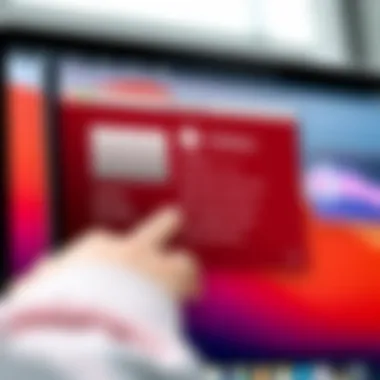
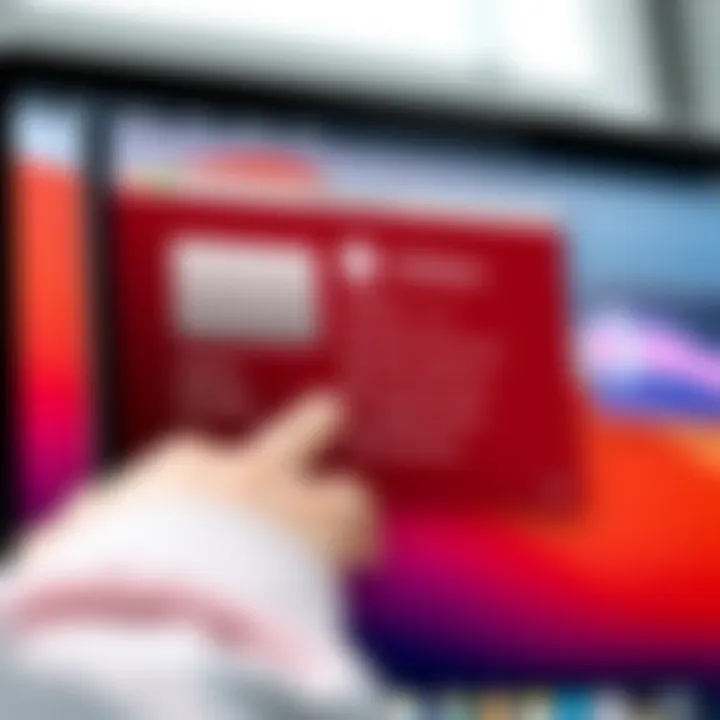
Once you have QuickTime Player up and running, selecting the recording option is a breeze. Just click on “File” in the menu bar, then choose “New Screen Recording.” The critical part of this function is that it allows you to choose between recording the entire screen or just a selected portion. This flexibility is beneficial for tasks where you may not want to show sensitive information, or when you want to focus on a specific application.
The unique feature here lies in its simplicity—there’s no complicated setup process. You can jump right into recording without much fuss. However, be aware that not selecting the right area can lead to unintended displays, so users should pay attention when making their selections.
Adjusting audio settings
After selecting your recording options, adjusting the audio settings is vital for a successful recording. QuickTime Player enables users to choose the audio input source, which means you can record system audio, a microphone, or both. This particular setting is important, depending on whether you need narration or background sound in your recordings.
The ability to mix audio sources effectively expands your options for creating richer tutorials or presentations. Take note though: managing audio settings can sometimes feel like a gamble, especially if you're unfamiliar with your audio input devices. Getting the right balance might require some trial and error.
Using macOS Screenshot Tool
Keyboard shortcuts for screen recording
The macOS Screenshot Tool is another handy option. Utilizing keyboard shortcuts for screen recording is a key aspect of this method. Pressing Command + Shift + 5 brings up the screen capture interface, providing a fast access point to start recording. This direct method saves time, particularly in scenarios where every second counts.
The shortcut feature is particularly popular among power users who prefer keyboard commands over navigating through menus. A unique aspect of this tool is that it allows for quick edits and options at the same time you start the recording process. However, new users might find the array of options slightly overwhelming, necessitating a brief learning curve.
Choosing audio sources
Choosing audio sources when using the macOS Screenshot Tool plays a pivotal role in determining the quality of your recordings. When you begin recording, you can easily switch between various audio sources just like with QuickTime. By adjusting these selections directly from the interface, you streamline the workflow and enhance your final product.
The major advantage here is flexibility; you’re never stuck recording in one specific format. However, do keep in mind that if the correct audio source isn’t selected, it could lead to a disappointing outcome, such as a silent presentation or poor sound quality.
Stopping the recording
Finally, stopping the recording is just as seamless as starting it. With keyboard shortcuts or clicking the stop button in the menu bar, you can easily halt the process. This characteristic ensures that you maintain control over your recordings and can quickly end them once you’ve captured what’s needed.
A unique advantage of this feature is that you will receive an on-screen notification once the recording stops, which is handy for ensuring that everything is concluded as intended. Nevertheless, if you’re not aware of how to stop a recording efficiently, you might find yourself frustrated if it overshoots your intended end time.
Third-Party Applications for Advanced Screen Recording
When it comes to recording your screen on a Mac, you might find the built-in options to be quite limited, especially if you're looking for something more specialized. That's where third-party applications stride in, offering a whole new world of possibilities for screen recording with sound. Unlike the straightforward functionality that comes with QuickTime or the macOS Screenshot tool, these applications provide extra features, catering to advanced needs such as professional-quality videos, detailed editing, and customizable settings. Let's delve into some popular software options and see what they offer.
Overview of Popular Screen Recording Software
ScreenFlow
ScreenFlow is a powerhouse for Mac users who demand a lot from their screen recording software. Its key characteristic lies in its robust editing capabilities. Not only does it allow you to record your screen and audio simultaneously, but it's also equipped with a full-fledged editing suite. This makes it an excellent choice for creating polished videos without the hassle of switching between different applications.
One unique feature of ScreenFlow is its ability to record from multiple sources, which enables you to integrate webcam footage and screen captures seamlessly. This is particularly useful for instructional videos or presentations where you want to show your face while demonstrating something on-screen. However, a potential disadvantage is its price point, which can be a bit steep for casual users.
Camtasia
Camtasia is another big player in the world of screen recording. What sets it apart is its user-friendly interface paired with advanced features, making it ideal for newbies and seasoned pros alike. A defining aspect of Camtasia is its drag-and-drop capability, which simplifies the editing process significantly.
Camtasia also offers a library of royalty-free music and sound effects, making it easier for you to enrich your recordings without worrying about copyright issues. One downside, however, is that it can be somewhat resource-heavy, meaning older Macs might struggle to run it smoothly during taxing sessions.
OBS Studio
OBS Studio is a titan when it comes to flexibility and customization. It's an open-source application that stands out for its versatility, and it’s particularly popular among gamers and streamers. One of the key characteristics of OBS is its ability to record in high resolutions and at high frame rates, which is crucial for maintaining quality during fast-moving actions.
A unique feature here is the scene composition capability, allowing users to create multiple layers and switch seamlessly during a recording session. However, this complexity comes with a bit of a learning curve, which might be a hurdle for newcomers trying to get started with screen recording.
Choosing the Right Application
When navigating your options, it becomes critical to choose the right application based on specific needs. Each of these, while powerful, has a different focus and feature set.
Assessing User Needs
Understanding what you need from a screen recording application is paramount. Are you focusing on high-quality video production? Do you need extensive editing features? Are you simply looking to create quick tutorials? Knowing your requirements can help narrow down your options effectively. Evaluating user needs isn't just a beneficial approach; it’s essential for finding the right fit.
The standout feature here is its direct influence on the choice of applications, ensuring users don’t overpay for unnecessary capabilities or settle for something lacking in essential functions.
Comparative Features
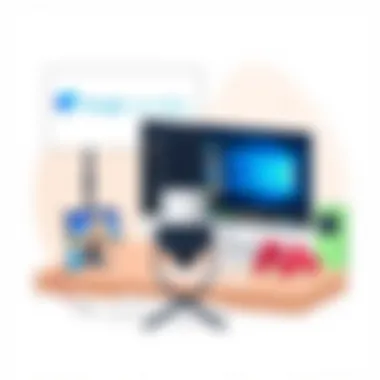
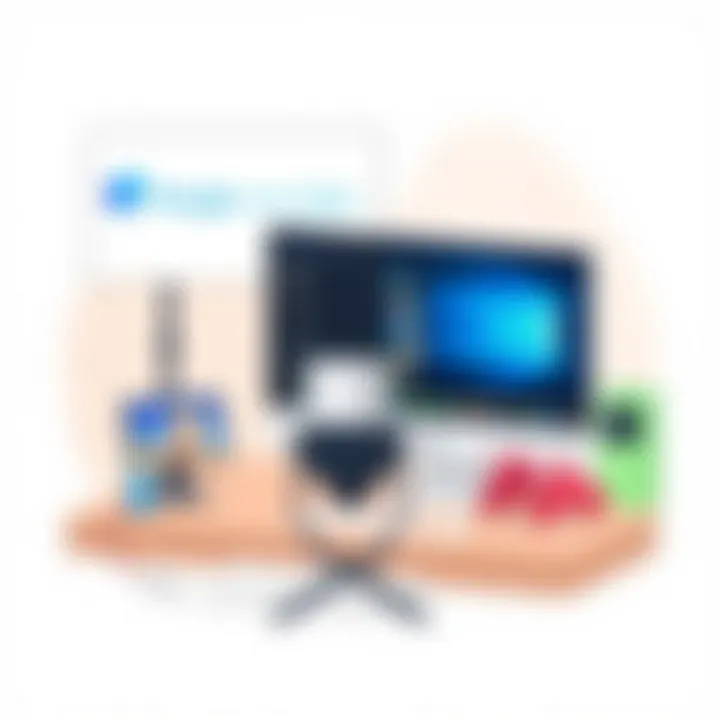
Examining the comparative features of these applications can provide a clearer picture of what they bring to the table. Looking at aspects such as recording quality, editing tools, and usability will help identify which software aligns with your objectives. This analysis is beneficial, particularly when trying to make informed decisions based on the complexity and scope of your projects.
A notable feature in this context is observing how each application handles video resolution and audio quality, which can drastically affect the end product's appearance and sound.
Pricing Considerations
Cost is always a factor when choosing software. Each application varies significantly in terms of pricing, and understanding this can help align your budget with your needs. Some programs, like OBS Studio, are free, while others, like ScreenFlow and Camtasia, require a significant investment.
Pricing considerations can also dictate which features you end up using. For example, opting for a subscription service might seem attractive for access to continuous updates, but for one-time projects, buying a standalone license could be more economical.
When weighing these options, one unique feature to take note of is any introductory discounts or trial versions available, which can help cement your decision without financial risk.
Settings and Configurations for Optimal Recording
When it comes to recording your Mac screen, the right settings can make or break your video. Settings and configurations not only affect the quality of your recording but also impact the ease of editing and sharing later on. Properly adjusting these elements ensures that the audio is crisp and the video is smooth, making the whole process much simpler and more effective.
Audio Preferences
Getting the audio right is vital when recording, especially if you're planning to overlay commentary or capture system sounds. Here are a few points to consider:
- Select Your Input Device: When you begin a recording session, take a moment to select the appropriate audio input device. Most applications allow you to record sound from your computer's microphone or system audio. By doing this, you're ensuring that any narration or system sounds are captured clearly.
- Check Volume Levels: It’s important to ensure that audio levels are not peaking. If the sound is too loud, you may get distortion. Conversely, too soft, and your viewers might strain to hear you. A good practice is to run a short test recording to check those levels, adjusting as necessary.
- Reduce Background Noise: If you are in a noisy environment, consider using a noise-cancelling microphone or software that filters out unwanted sounds during recording. This leads to a professional finish that resonates well with your audience.
By focusing on these aspects of audio preferences, you create a more polished viewing experience for your audience.
Video Quality Settings
Video quality is another cornerstone of a successful screen recording. Here’s what needs attention:
- Resolution Settings: Depending on what you plan to share the recording on, the resolution can have a significant impact on clarity. For example, if you are creating content for YouTube, opting for 1080p is generally a good bet. However, recording in higher resolution like 4K can be beneficial if detail is crucial, yet it comes with an increased file size.
- Frame Rate: The frame rate, often measured in frames per second (FPS), affects how smooth the video appears. A standard frame rate for high-quality video is 30 FPS. If you're capturing fast-paced content, consider going for 60 FPS for better fluidity.
- Codec Choice: Choosing the right codec also plays a role in the size and quality of the video file. H.264 is a commonly used codec that provides a good balance between quality and file size. Some applications allow you to choose the codec during the export process, so make sure to select one that fits your needs.
Exploring these options gives you more control over how your recording turns out.
"Ultimately, it’s about making the viewer's experience as engaging and seamless as possible."
By emphasizing audio and video settings before hitting that record button, you pave the way for high-quality output that stands above the rest.
Best Practices for Screen Recording
When it comes to screen recording on a Mac, employing best practices can make the difference between a polished video and a frustrating experience. Proper planning and execution enhance not only the quality of the recording but also the viewer's engagement. Here are some important elements you should consider:
- Clarity: Make sure the purpose of your recording is straight as an arrow. Know what you want to achieve and design your visual flow accordingly. Whether it's a tutorial or a presentation, defining your objectives will guide your choices throughout the recording process.
- Environment: A cluttered background can detract from the content you're trying to deliver. Pay attention to your workspace. A clean desktop and organized applications ensure nothing distracts the viewer from the intended message.
- Duration: Aim for brevity without sacrificing content quality. Long, rambling videos may lose your audience's attention. Keep your recording succinct while ensuring that you cover the essential points.
Preparing Your Workspace
When you sit down to record, setting up your workspace properly is paramount. A tidy and organized workspace fosters concentration and minimizes distractions. Before you hit that record button, consider these aspects:
- Desktop Cleanliness: Remove unnecessary icons and files from your desktop. Visibility increases clarity—both for you and your audience.
- Software Arrangement: Arrange the applications you plan to use neatly, so they are easily accessible. This way, you can navigate smoothly without fumbling during recording.
- Notifications: Silence unnecessary notifications that might pop up during your recording session. You wouldn't want an unwanted ping or alert to disrupt your flow.
- Lighting and Background: If you're including a webcam view in your recording, ensure your space is well-lit and your background is professional. Natural light or a good lamp can often do the trick.
Testing Before Recording
It wouldn't be wise to drive without checking your mirrors, right? The same logic applies before starting your recording. Testing paves the way to a hassle-free recording process. Here’s how you can conduct effective tests:
- Audio Check: Make sure your microphone is functioning well. Record a short clip and listen back to ensure clarity and volume levels are on point. You wouldn’t want whispers in your recording when you intended to speak clearly.
- Video Quality: Test the resolution settings for your recording. Check different frame sizes to see which works best for your content type. Generally, 1080p is a safe choice for most applications.
- Connection Stability: If your recording involves live action or streaming, ensure that your internet connection is stable. Unstable connections can lead to lag, ruining the overall quality.
- Workflow Run-Through: Perform a quick run-through of your presentation or instructions. This rehearsal helps identify any awkward pauses or unclear information.
"Preparation is the key to success."
Following these practices can significantly improve your recording experience on Mac. Once your workspace is set and tested, you'll be ready to capture high-quality content seamlessly.
Editing and Sharing Recorded Content
After capturing your screen recordings, the next phase is to refine and distribute your content effectively. Editing and sharing play a crucial role in ensuring that the recorded material is not just raw footage, but a polished product that communicates your message clearly and effectively. A well-edited video can enhance engagement and convey professionalism, which is particularly important in today's digital landscape where content is often consumed rapidly. Therefore, knowing the essentials of editing and the pathways for sharing your recordings is indispensable.
Basic Editing Techniques

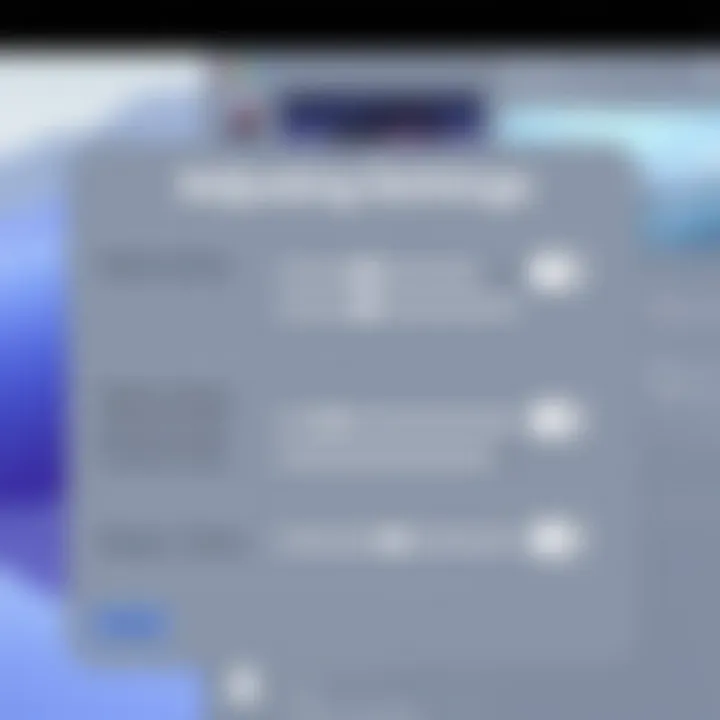
Trimming clips
Trimming clips is perhaps one of the most fundamental yet valuable editing techniques one can employ. The art of trimming involves cutting away unnecessary segments from your video, ensuring that only relevant content remains. This not only makes your recording more palatable but also keeps your audience's attention focused on the essential parts.
Key Feature: The simplicity of this approach is a standout characteristic. It’s an easy fix to the common problem of excessive length in recordings. Trimming is often seen as a beneficial measure because it can significantly reduce the duration without sacrificing the quality of the provided information. The advantage of trimming lies in streamlining your content; it gets straight to the point, which is a primary concern for viewers who may lose interest if they are faced with overly lengthy videos. However, one has to be careful not to over-trim, as removing critical context could confuse viewers or misrepresent the original intent of the recording.
Adding annotations
Adding annotations can breathe life into your recordings, providing context or clarifying points that may otherwise be lost on the viewer. This technique allows you to overlay text or graphical elements onto your video, augmenting its educational value. They can highlight critical information, provide additional commentary, or direct viewers to external resources.
Key Characteristic: Annotations are interactive by nature; they engage viewers in a way that static recordings cannot. This aspect makes them particularly popular among educators and influencers who want to make their content more informative and dynamic. A unique advantage of annotations is how they can direct viewers’ attention properly during playback. However, there is a downside to consider: if overused or poorly designed, annotations can clutter the visual experience and distract from the core message of the video.
Exporting Options
After the editing is complete, you must decide how to export and share your recording. This step is often overlooked but is crucial for maximizing the reach and usability of your videos.
Choosing file formats
When it comes to exporting your recordings, choosing the right file format can make a world of difference. Different formats serve different purposes, and selecting the appropriate one is essential for the intended use of the video. For example, MP4 is one of the most widely accepted formats across platforms, making it a safe bet for general sharing and compatibility.
Key Feature: Versatility is the primary strength of formats like MP4 and MOV, as they strike a balance between quality and file size. This characteristic makes them a beneficial choice for anyone aiming for ease of access while maintaining a decent level of quality. On the flip side, choosing a less common format can limit your audience's ability to view the video, so it's crucial to be mindful of your audience's needs when making this choice.
Uploading to various platforms
Finally, sharing your content with the world means navigating through different platforms, each offering unique characteristics and audience preferences. Whether it's YouTube for broader visibility, Vimeo for high quality, or social media networks like Facebook and Instagram for personalized outreach, each platform has its own set of advantages.
Key Characteristic: This multiplicity of options allows you to tailor your approach based on where your target audience spends their time. Uploading is not just about placing your content online; it involves optimizing your video for each platform's algorithms and user expectations. The downside, however, lies in the time investment required to understand each platform's intricacies and best practices. The potential for overwhelming complexity is there, particularly for someone new to sharing video content.
Effective editing and sharing can greatly enhance the impact of your screen recordings, making clarity and accessibility paramount in your approach.
Common Issues and Troubleshooting
When it comes to screen recording on your Mac, experiencing hitches is not uncommon. Recognizing and resolving these common issues can save time and frustration. Each technology comes with its quirks, but knowing where to start when trouble arises can lead to a smoother experience. This section covers two prevalent problems: audio not recording and screen freezes. Understanding these issues illuminates the way forward, allowing you to effectively troubleshoot and get back to capturing your screen.
Audio Not Recording
Audio issues can be a real headache when recording, especially if you intend for the final product to include commentary or sound effects. If you find that your recordings are coming through silent as a grave, there could be various reasons behind this annoyance.
Here are a few steps to consider:
- Check your audio settings: Sometimes, the audio source may not be correctly selected in your screen recording application. Ensure you’re capturing sound from the right source, whether that’s the built-in microphone or an external one.
- Verify system preferences: Go into your Mac’s System Preferences and check the Sound settings. Make sure the input and output options are configured properly. This is critical because if the inputs are muted or set to the wrong device, your recorded sound won’t make it into the final video.
- Test microphone functionality: Use a simple application, like Voice Memos, to test if your microphone is working. If it’s silent there too, you may need to troubleshoot the mic or consider using a different one.
- Restart your recording app: Sometimes a quick reboot of the software can clear up glitches that lead to audio problems.
- MacOS updates: Ensure your operating system is up to date. Outdated software could lead to compatibility issues affecting how audio records.
Remember: troubleshooting audio issues can feel daunting, but often the solution is just a few clicks away.
Screen Freezes During Recording
Experiencing a frozen screen while recording is another common predicament. It’s frustrating, especially when you’re in the zone and trying to capture all the action. When this happens, several factors may be at play:
- System resources: Recording a screen can be resource-intensive. If you're running other applications simultaneously, that may drain your Mac’s performance. Close unnecessary apps or tabs to free up resources.
- Disk space: Ensure you have enough space on your hard drive. A full disk can lead to sluggish performance and cause recordings to stutter or freeze.
- Resolution and frame rate settings: Adjusting the resolution and frame rate of your recording can help. Lowering these settings can ease the burden on your system and help prevent freezing.
- Software versions: Again, ensuring you have the latest software updates can be a game-changer. Sometimes screen recording applications have bugs that are resolved with updates.
- Use a different app: If one application frequently gives you trouble, consider testing another. Some users have found smoother results with alternative recording tools, especially when faced with hardware limitations.
"Prevention is better than cure." Taking time to configure your settings before starting can save you from many headaches during the actual recording.
By understanding and recognizing these common issues, you'll not only enhance your recording experience but also improve the quality of your final product. Don't let technical troubles put a damper on your creativity.
Ending
In wrapping up the exploration of screen recording on Mac, it's essential to underscore its significance in an increasingly digital world. This ability to capture what's happening on your screen, especially when coupled with sound, opens up a myriad of opportunities not just for personal projects but also for professional endeavors.
Recording your screen can greatly enhance tutorials and presentations. It allows you to demonstrate software usage, providing clearer instructions than static images or text alone. By syncing audio with visuals, lecturers and trainers can convey not just the steps but also the reasoning behind them, making the learning process more engaging and effective.
In addition, for gamers, screen recording turns gameplay into shareable content, enabling them to connect with audiences via platforms like Twitch or YouTube. This not only cultivates a community but can reignite interest in gaming itself, showcasing skills and strategies in a visual format.
However, as emphasized throughout this guide, choosing the right method for recording should reflect individual needs. The built-in options of macOS, like QuickTime Player and the Screenshot Tool, work well for quick projects, but for users wanting advanced features—think of detailed editing functions or high-definition outputs—third-party applications such as ScreenFlow and Camtasia are more fitting.
Remember, it is always prudent to tweak settings according to the content type. Quality matters, whether it’s the clarity of the visuals or the crispness of the audio. Testing your setup prior to a significant recording can save headaches later.
Key Takeaways:
- Screen recording is vital for effective communication in tutorials and presentations.
- Selecting the right tool depends on the complexity and purpose of the content.
- Always prioritize sound and video quality for the best results.
Your recording journey can not only simplify sharing knowledge but also foster connections across various platforms. Armed with the right tools and techniques, you are now equipped to harness the full potential of screen recording on your Mac.

